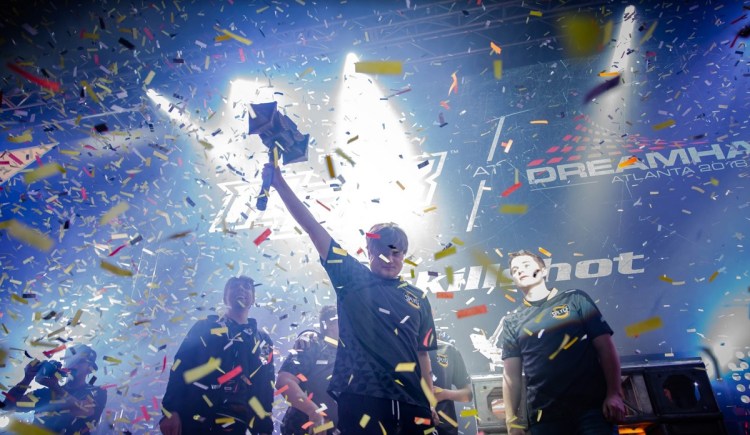Building up the esports infrastructure for Smite’s esports community has been a lot of work. Over six years, the community of players has grown to nearly 30 million.
Todd Harris, cofounder of Hi-Rez Studios in Atlanta, said in a fireside chat with me at the Esports BAR Miami event last week that the company has laboriously built an ecosystem for the multiplayer online battle arena (MOBA) game that makes it similar to one of the smaller traditional sports, like golf, which attracts a rich demographic despite is smaller size.
Thanks to Smite’s popularity and $300 million in revenue to date, Hi-Rez Studios has been able to create 450 jobs. Hi-Rez Studios also created Skillshot, which produces esports content for broadcast purposes. Skillshot makes that esports content for Smite as well as other games made by other game companies.
And Harris says the payoff is big. A study by Emory University showed that fans who watched Smite esports were more engaged and bought more things in the game than those who did not. That makes the many years of investment in esports all seem worth it, Harris said.
June 5th: The AI Audit in NYC
Join us next week in NYC to engage with top executive leaders, delving into strategies for auditing AI models to ensure fairness, optimal performance, and ethical compliance across diverse organizations. Secure your attendance for this exclusive invite-only event.
I spoke with Harris and Johannes Waldstein, CEO of FanAI, onstage at Esports BAR Miami about the analytics behind esports communities and how it can and will make a big impression on brands that want to sponsor esports events.
Here’s an edited transcript of our interview.

Above: Todd Harris is COO and cofounder of Hi-Rez Studios
GamesBeat: Tell us what you do.
Todd Harris: We founded a game company called Hi-Rez Studios 14 years ago. We make Smite, Paladins, Realm Royale, and other games. About 18 months ago we founded a turnkey esports production company called Skillshot. We’re here to talk a bit about both of those.
Johannes Waldstein: I’m founder and CEO of FanAI, founded three years ago to solve a bit of the problem that Joe Barnes and Stuart Saw talked about. How do you get non-panel-based metrics? How do you look at tens of millions of players or viewers or people interacting in esports? We’ve been working with Todd and the Skillshot team and the Hi-Rez team for a while now. I’m looking forward to talking through some of the inventive, leading-edge things we’ve been doing with them and that they’re planning on doing.
GamesBeat: Todd, can you make a case that you’re the golf of esports?
Harris: You’re really looking for that golf, aren’t you?
GamesBeat: You have 30 million players.
Harris: Yeah, we do. There are all these different sets of data out there around esports as a whole, but of course each esports community is different. For many brands, reaching 10 million people may not matter if it’s not the right 10 million people for them. If those 10 million are in China and you don’t have stores in China, that’s not a relevant audience.
Something we spend a lot of time thinking about as we enter esports from the publisher angle is how we can deliver value to every partner: the community, the publisher, and the sponsor. With the game Smite, we started with a pretty small team. We were competing against a pretty big game called League of Legends, and another big game called Dota 2.
How did we end up in the third position with 30 million people? Well, we delivered value to the community. We priced the game aggressively. League of Legends priced the characters a la carte. We said that for $20, you could get all the characters in the game. You’ll have competitive integrity with one purchase price. We’ve kept that. That’s valuable to the community.
How do we deliver value to the publisher? We actually have some data, and I’ll share this with anyone who comes up to me at the show. From a publisher perspective, there’s this question about esports ROI. You spend a lot of money on events. Does it really return value? If people are watching Smite, does that actually take them away from playing Smite, or do they play more Smite?
We looked at that very, very objectively. We worked with a third party out of the Emory Research Center. We did a very controlled test. There was an eight-week period where we took two groups of players. One group watched Smite esports and the other group did not. Before the test they had similar engagement patterns, play patterns. We saw definitively that in that eight-week period, the group that was the same other than they watched Smite, they spent more — and particularly over that short period of time they spent $5 more above their normal spend — and they engaged more, 600 minutes more.
Finally, from the sponsor standpoint, can we be the golf of esports? Can we deliver a million players that are super valuable? I think we can, because none of our players are in China. There’s a lot of League of Legends players in China. All of our players are in the U.S., the U.K., and western Europe. Our particular game is playable on the consoles. It’s not just a PC title. It’s free to play on Xbox, PlayStation, and Switch. Those platforms overindex in western markets. You’re looking at a very high-spending audience.
But what are they spending money on? That’s where we partnered with FanAI, because I’m just a data nerd. The same way I look at ROI from a publisher, I’m not going to talk to a sponsor unless I bring them tremendous value, and unless my product fits with their audience. Otherwise there’s going to blowback. We shared our data with FanAI — a huge cohort, tens of millions — where the data is anonymized. Now I can look and see what categories and particular brands they’re spending on.
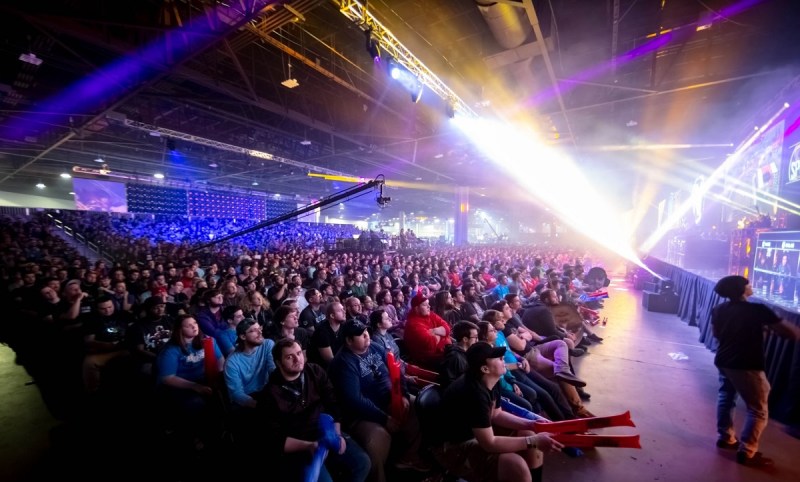
Above: Millennials love esports.
GamesBeat: And what do you do with that data?
Waldstein: As Todd said, we take those tens of millions of data points, and instead of having a thousand-person panel, we have tens of millions of people who play the game, who watch on Twitch, and we can see what categories they’re spending in. Automotive is one of the categories where millions and millions in the U.S. are spending a lot. Todd could go to a large U.S. automaker and we could say, “These hundreds of thousands are buying this make and model of car. This is how they spend on domestic or foreign cars.”
When Todd and his Skillshot team, a market-leading esports agency–they’re able to talk to that brand not about what the general market looks like, how many people watch esports, but he’s able to say, “The Smite audience spends this much more or less on an American SUV or a foreign luxury automobile.” We’re able to understand at a very deep level, both from a brand perspective or an agency perspective, and be able to match that. If you’re a fan you want things that are relevant to you. You want sponsors that add value to your experience.
Harris: There’s a good case that Smite could be the golf of esports, then, but Skillshot is really publisher-agnostic. This platform is part of us saying, “We’ll work with the leading competitive games out there. We’ll do tournaments. We’ll get to know the audience and be able to connect leading brands with engaged fans where it makes sense, not where it doesn’t.” We’re all about long-term partnerships. That’s why we’ve been at this for 15 years.
Waldstein: Two third-party examples — one is the Atlanta Reign, the Overwatch League team in Atlanta, which was an amazing, tension-filled, exciting event. It was put on by Skillshot and run for the team. We’re getting all of the data from that venue — everyone who went to that venue, everyone who watched on Twitch. Understanding that regionality, moving from a studio somewhere in California to now having multiple homestands in a market where you can do a lot more activation.
We were just in Philadelphia. The audience in Philadelphia is different from the audience for the Fuel in Dallas, or the Atlanta audience. We’re trying to understand that local demographic, what local events are best, and then making sure that they’re well-executed.
GamesBeat: Why does it make sense to have Skillshot and the game publisher in the same company? What insights are you getting? What business advantage comes to you?
Harris: It gives us a different lens. There’s a lot of great agencies and great tournament operators, but I don’t know any of them that have come at it from the publisher point of view. We started the company out of passion, to make online games. We’ve been serving the gaming community for a long time.
From an investment standpoint it’s nice, because gaming is a great business when you have a hit. A tournament organization business is a bit more of a horizontal bet. We can ride the wave. But from an operator standpoint, the fact that we were the single owner of a MOBA with Smite, a shooter with Paladins, the mobile games that Hi-Rez has done, that let us have the conversations with the Overwatch Reign to support them on their Atlanta homestand. With Brawl Stars we’re doing their world qualifications for mobile. We work with console titles like Halo.
It’s just a different DNA of where we come from. We don’t come from the agency background. We come from a gamer background. We think we can speak to that audience, because we are that community.
GamesBeat: Are you going back and designing games in a different way now that you have this knowledge?
Harris: Early on with Smite, and before that with Tribes, esports is just in our blood. From the very beginning when we started the company, it was all about this idea that you would connect with other people all over the world and play competitively. Every game we’ve made is an aspiring esports. Some make it and some don’t, but that continues to be our goal. It’s just in our DNA.
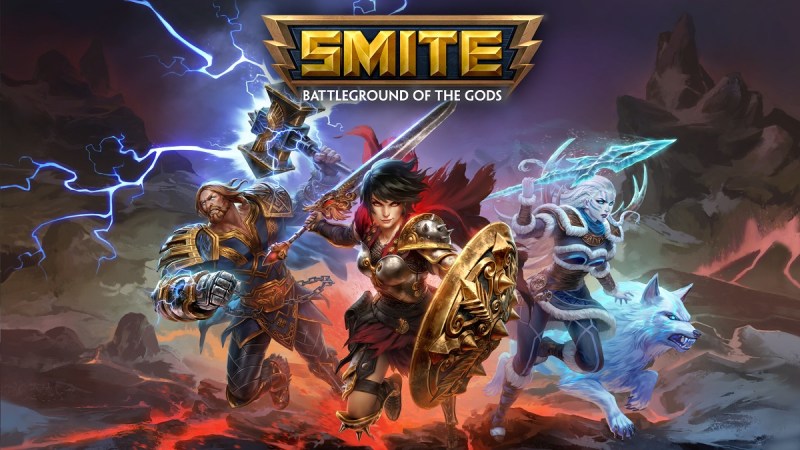
Above: Smite is a free-to-play multiplayer online battle arena game.
GamesBeat: Would you now try to make games that are more popular in Asia, or would you want to match the demographic that you’ve already found with Smite?
Harris: It’s an interesting question. We’ve gotten big enough now, with more than 450 employees, that there are various pods. Some have a 100-person team and some have a 20-person team. It’s still a creative industry. We still honestly lead with passion and inform it according to the market. We have a good idea of the genres and the demographics that play those genres. We aim for that general area. But I still fundamentally think it takes an amazing, special game with a point of passion to be more successful. That’s more important than anything else. That’s still what we start with.
GamesBeat: How is FanAI spreading out?
Waldstein: MonteCristo was talking earlier about money flowing down to influencers and to digital creators. We’re starting to move from being primarily with teams and publishers and out to digital influencers and other sports. One thing that I think is exciting is, as the market is maturing, it’s going from putting the logo on something to having amazing physical interactions with fans. How do you scale that digitally into the channel? How do you create better in-game content? How do you understand who the audience is at a detailed level, so that people who are over 21 are getting Bud Light things, and the people younger than that are getting Nerf guns, things at their interest level?
You want to make a connection with a title like Smite that has 30 million players. What brands match what regions and what segments? How do you get things in the game, in the login, at a Dreamhack event where they do one of their finals? How do you have the right activations for the right audience that are going there? How do you match to the right influencers who are streaming Smite content? How do you retarget or interact on multiple channels — on Instagram, on Reddit, on Snapchat? How do you reach that audience in other places?
What we find is that brands went from “I want my logo on something” to starting to think of it holistically. FanAI as a company is starting to take people through that. Three years ago we started with, “Who are esports fans? They’re not all 14.” Three years later, the market is a lot more mature. The agencies, the data-driven brands, are now starting to come through and are able to interact along that full value chain.
Harris: One other point, coming from the publisher background, is about the real, deep appreciation of how fans need value out of engagements. We come from a game background. Our games are free to play, which means there’s no friction to install. There’s also no friction to uninstall. You have to constantly deliver value, which from a publisher standpoint we do with patches every two weeks.
In the same way, when we talk with brands, we try to inject value into the community. A lot of the examples from the previous panels did that. Certainly in-game content is amazing when that matches a publisher’s goals, because nothing lights up the community like exclusive content that happens to be branded. If that’s the only way you get it, it’s not an ad. It’s a scarce good that’s just organically advertising within the game community. We’ve seen that happen time and again.
Smite is a property that’s willing to do that for the right partner, and maybe not all brands are right. We’re always thinking, again, about publisher value, sponsor value, and community value, making sure all three are in place. That makes a good cooperation.
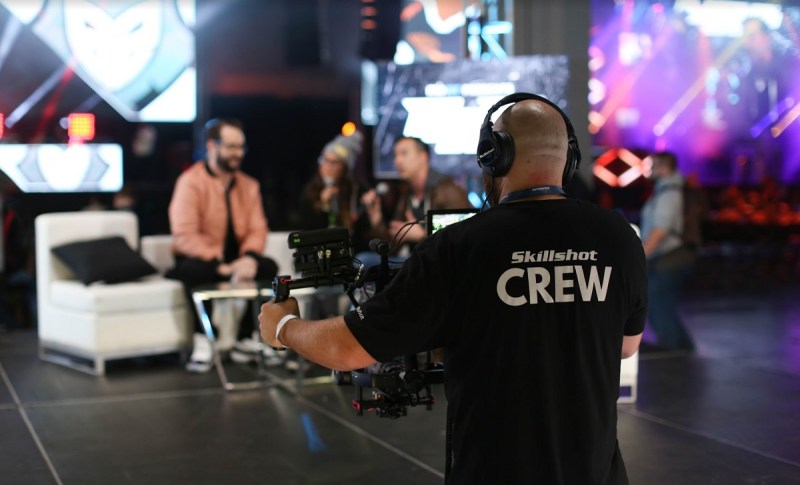
Above: Hi-Rez Studios has formed Skillshot to create esports content.
GamesBeat: Are you seeing some smart, authentic activations happening at your events?
Harris: Even outside of our events, a lot of the ones that were highlighted in the initial panel were very well-done. We try to lean into the interactivity of the platforms themselves. We were, I think, the first to engage with Twitch on their Twitch Prime program, very early on. We were the first to engineer viewer rewards on the Mixer platform. We were slightly ahead of Ninja. I guess we’re visionaries? We did the same thing with the Facebook platform.
The idea that you can watch on these platforms and get rewards–in the case of Mixer, we architected a Mixer points system. You can watch and grind your way to items that you might not be able to pay for or play for. It’s another path to accumulating content in Smite. Again, we look at what’s unique about these platforms, which is the interactivity, and try to go hard on that.
GamesBeat: What’s your road map ahead for esports, things that are happening in the future?
Harris: I’m excited about mobile in general. From a Skillshot lens, looking across the spectrum of what’s out there–sometimes when I talk to the crusty old-school esports guys like myself, they look down on mobile esports, the same way traditional sports used to look down at esports, which is kind of funny. I think there’s going to be a lot of that in the future if you look to Asia, which is where the trends tend to start. As a general category, I’m excited about that.
From a Skillshot standpoint we’re just trying to be a one-stop, single solution provider. We’ve had the experience of everything from promoting events to putting on the live content to branded content to getting players here and navigating the visa process to getting them payment to making sure they’re tax-compliant. We’ve been doing that whole thing for about a decade.
Waldstein: We have two trends that are on the opposite sides. One is augmented reality and virtual reality. Having the dragon fly through virtually, or like it’s really here. The fact that the experiences are going to become more and more visually compelling–it’s going to feel more and more real. That’s one very strong trend.
The other strong trend with franchising and location-based experiences is that people also really want physical experiences. Now, instead of just being able to watch esports on Twitch with your phone or your PC, suddenly you can go to Philadelphia and watch the Shock sweep the Overwatch League finals. That’s an incredible experience. I was just there this weekend.
So we have those two trends: going toward VR and AR, and then a lot more physical esports experiences. That’s a huge opportunity for brands — to put their products and their experience in people’s hands, to win them over as advocates, to share with them in that experience. You have the digital meeting the real world and back to the digital. Those are two very strong trends we’ll see next year.
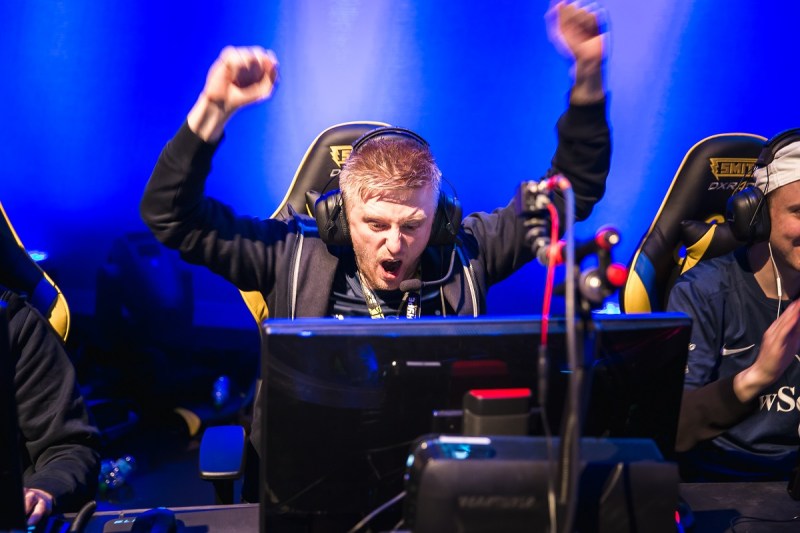
Above: A Smite esports match
Harris: One other point I’ll throw in–this is a business summit, but I always like to talk about the character side of the esports. We’re in this legitimizing phase. People understand there are a lot of eyeballs. But to me as a parent–I see a lot of young players. The whole character development side of esports is a conversation we don’t have enough, especially when folks are sometimes casting stones at gaming.
The same reason I like my son to play soccer, and he’s also a varsity cross-country runner, I love it when he plays Smite. He develops teamwork and mastery and communication skills. I think that as more high schools and colleges get into esports, and institutions in general, that’s going to be another wave of cultural conversation that will be very important for us as an industry. We can’t talk about that enough. The number of folks I’ve seen where their lives have been changed for the better because of gaming and esports is very high. I see those stories every day.
GamesBeat: It seems like you guys should rush into high school esports soon. All the companies like PlayVS — they raised $50 million for high school esports tournaments.
Harris: Yeah, Smite is one of only three games they currently endorse. It’s very brand-safe and very kid-friendly. It’s T for Teen. We do partner with them, as well as others.
Question: You mentioned networking and how gaming is the new social network. Can you talk more about that phenomenon?
Waldstein: I’ll start with a story and then hand it off to the person who knows what they’re talking about. One of our best developers was playing League of Legends. He ended up matching and playing pretty often with another character. He then met her at an event, fell in love with her, and they got engaged. A lot of their friends are around League of Legends. They watch competitions. They play with their friends. It’s part of their life.
Where before you would meet somebody playing a game or a sport in real life, or some other way, now a lot of people’s time is spent in a community online, inside a game or around a game. That’s something personal from FanAI. One of our developers literally met his wife playing League of Legends, in the community around it.
Harris: I have a similar story. Allie Young is here. She’s out of Atlanta. She met her husband playing an online game, and now she owns a business in Atlanta, a communal social space for gamers. That’s one. Again, I see it with my son firsthand every day. Half of his friends are real-world, from school, and half of his friends — and he uses the same term — are folks that he games with.
I see examples with our players. Some of them may be on the autism spectrum. They don’t necessarily feel comfortable in many real-life social situations, but online there’s an objective. They start to communicate to accomplish that objective. Then they build up more and more skills. I’ve been there at LANs where they meet friends for the first time in real life, and over time all the Smite teams have physically moved to Atlanta to live together. You see this evolution where now they’re more comfortable in social settings.
These are just a few examples, but I think it’s the most positive version of social networking that’s around today. There’s a goal. It’s cooperative.

Above: Smite draws the esports fans.
GamesBeat: When I was writing about the high school companies, it was interesting that you might expect the schools to resist the notion of video game leagues, because they want kids to study instead. But they actually see the value of the social side as well, because there are so many kids who in some ways are ostracized in high school because they’re not part of traditional sports. Esports creates opportunities for these kids to get involved and benefit in the same way.
Harris: You’re reaching a cohort that might not engage otherwise. Maybe they would play at home. But now, the way some of the leagues work, you have to play on campus. Now you’re engaged with your school. You’re playing on behalf of your school. That’s very positive.
The correlation with STEM skills is very strong as well. I probably started Hi-Rez because seventh-grade me got an IBM PC and there weren’t enough games, so I had to teach myself to try to make games as a hobbyist. That’s the story for a lot of folks that get into tech. Games light them up and become the gateway into a technology career.
Disclosure: The organizers of Esports Bar Miami paid my way to Miami. Our coverage remains objective.
